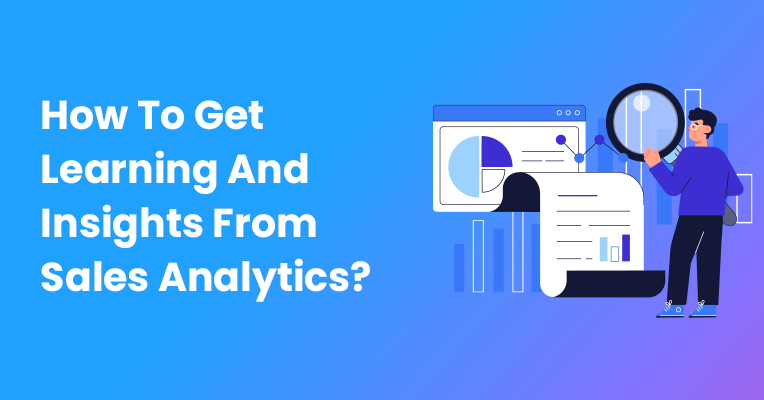In today’s ever-evolving education industry, staying ahead of the curve requires educational organizations to embrace data-driven decision-making. Just as analytics plays a crucial role in various aspects of our lives, from optimizing daily commutes to predicting stock market trends, sales analytics is equally essential. By harnessing the power of sales analytics, educational organizations can gain valuable insights and learnings that can be applied to critical areas such as student enrollment, marketing effectiveness, and sales performance. This post aims to empower you with the knowledge and understanding of how sales analytics can be leveraged to address business challenges. We will explore the benefits of utilizing sales analytics, uncover key metrics and indicators to track, and discuss how Meritto (formerly NoPaperForms) can assist you in implementing effective sales analytics strategies to drive growth and success in your organization. Join us as we embark on a journey to unlock the potential of sales analytics in the education industry.
What is Sales Analytics?
Sales Analytics is the process of collecting, storing, and analysing data related to sales activities to gain insights and make data-driven decisions. It is a powerful tool for organisations looking to improve their sales performance and drive growth. It includes a wide range of data, such as customer demographics, lead and opportunity data, marketing campaigns, and sales performance data. By analysing this data, organisations can gain a comprehensive understanding of their sales activities and identify areas for improvement.
Benefits of Sales Analytics
- Better decision-making: Sales analytics provides insights into candidate behaviour, market trends, and sales performance, allowing organisations to make data-driven decisions. This enables organisations to make informed decisions about their sales strategies, marketing campaigns, and resource allocation.
- Increased efficiency: By analysing sales data, organisations can identify areas where they can optimise processes and increase efficiency. For example, by analysing lead and opportunity data, organisations can identify the most effective sales processes and allocate resources more effectively.
- Improved customer experience: Sales analytics provides insights into customer behaviour and preferences, allowing organisations to tailor their offerings and improve the customer experience. For example, by analysing customer data, organisations can identify the most popular courses and adjust their offerings to meet demand.
- Improved sales performance: Sales analytics provides a comprehensive understanding of sales performance, including the number of leads generated, conversion rates, and average deal size. This allows them to identify areas for improvement and drive growth.
Types of Sales Analytics in Education:
- Enrollment trends analysis: Examining historical and current enrollment data to identify patterns and trends, such as seasonal fluctuations and overall growth or decline.
- Student demographics analysis: Studying the characteristics of the student population, including age, gender, location, and income, to understand the market and tailor marketing efforts.
- Program/course demand analysis: Assessing demand for specific programs and courses to inform program offerings and resource allocation.
- Marketing effectiveness analysis: Measuring the impact of marketing campaigns on enrolment and revenue, to optimise future marketing strategies.
- Student acquisition cost analysis: Calculating the cost of acquiring each new student, to evaluate the efficiency of marketing and recruitment efforts.
- Retention and graduation rate analysis: Analysing data on student retention and graduation to identify areas of improvement in student support and retention strategies.
- Revenue and profit margin analysis: Evaluating revenue and expenses to determine the overall financial health of the institution and identify areas for cost control.
- Lead conversion rate analysis: Tracking the rate at which prospective students become enrolled students, to improve conversion rates and increase enrollment.
- Customer lifetime value analysis: Estimating the total value a student will bring to the institution over the course of their enrollment, to inform recruitment and retention efforts.
- Sales pipeline analysis: Monitoring the stages of the sales process for prospective students, from initial inquiry to enrollment, to identify areas for improvement and optimise conversion rates.
Quick Read: Types of Sales Performance Reports
What’s in it for an educational organisation?
- Enrolment forecasting: Sales analytics can help educational organisations predict student enrollment patterns and make informed decisions about staffing, facilities, and other resources. For example, by analysing student enrolment data, organisations can identify the most popular and in-demand courses and allocate resources accordingly.
- Marketing effectiveness: Sales analytics can provide insights into the effectiveness of different marketing channels and campaigns, allowing organisations to allocate resources more effectively. For example, by analysing marketing campaign data, organisations can identify the most effective channels for reaching potential students and allocate resources accordingly.
- Sales performance tracking: Sales analytics can provide insights into sales performance, including the number of leads generated, conversion rates, and average deal size, allowing organizations to identify areas for improvement and drive growth. For example, by analysing lead and opportunity data, organisations can identify the most effective sales processes and allocate resources accordingly.
Conclusion
To put it simply, the goal of sales analytics is to use data to enhance sales results. And it can drastically change your organisation and its growth if you use the appropriate tool.
One such solution for managing, recording, and extracting insights from sales data is a CRM. Meritto’s (formerly NoPaperForms) Education CRM not only allows you with advance monitoring and reporting capabilities but provides you with an end-to-end candidate journey and team view so that you can oversee every activity within your organisation even while moving.




